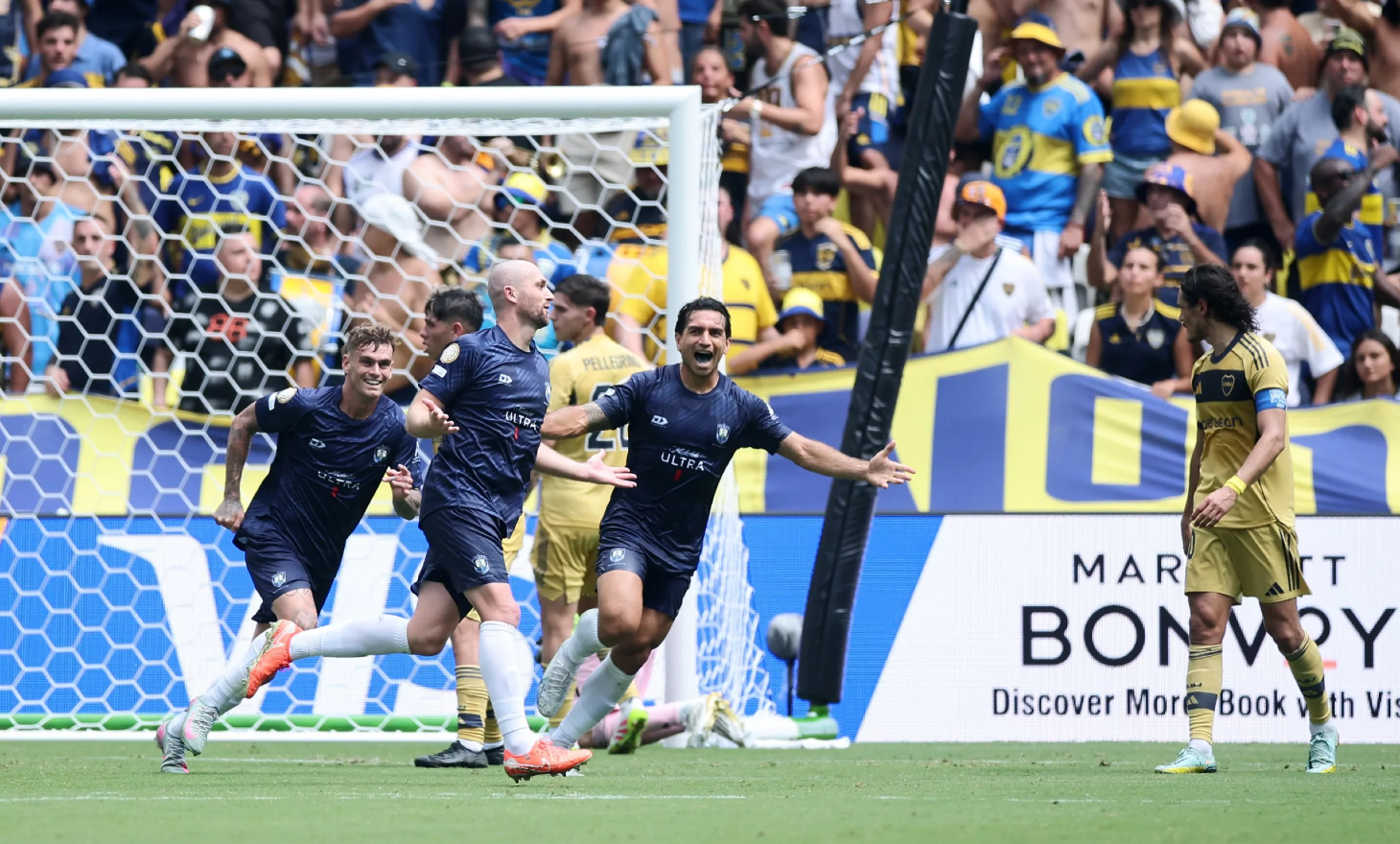
The 2025 FIFA Club World Cup is well into its knockout stage and while on-field drama continues to unfold, a fascinating story has been playing out on social media. As the tournament’s expanded format brought together 32 teams from six confederations for the first time, we wanted to examine the social media impact the global stage has had on participating clubs.
Using Social Blade, we analyzed Instagram follower growth from the tournament’s opening day (June 14) through the conclusion of the group stage (June 27)—the only phase where all 32 teams were actively involved. Instagram was chosen as our focus due to being the most active social media channel for engagement, offering the clearest window into fan interest and global reach.
With the group stage now complete and several teams having exited the competition, we have a comprehensive look at how this revitalized tournament has transformed the digital footprint of clubs from Auckland FC to Real Madrid. The results reveal some surprising winners and unexpected trends.
Five things you should know:
1. Brazil Dominates Social Media Growth by Country
Brazil’s four teams combined for 524,057 new followers, leading all nations. Spain finished second (351,455), followed by New Zealand (282,306) and the United States (198,669). All four Brazilian teams playing well and advancing to the knockout round certainly helped boost their respective followings.
2. Auckland City Achieves Unprecedented 998% Growth
The New Zealand team of amateurs gained 282,306 followers—nearly 10 times their following at the start of the tournament (28,269). With several viral moments during their time in the tournament—including this interview with the team’s goalscorer during the draw against Boca Juniors—helped prove that global exposure can transform even the smallest clubs overnight.
3. Non-European Clubs Dominate High Growth
Only 8 teams achieved at least a 2% growth during the group stage, and every single one came from outside Europe. This includes three from Africa (ES Tunis, Mamelodi Sundowns, Wydad), two from South America (Botafogo, Fluminense), two from Asia (Urawa Red Diamonds, Ulsan HD FC), and one from Oceania (Auckland City)—proving the tournament’s value for expanding global soccer’s reach beyond traditional powers.
4. David Beats Goliath in Social Media Efficiency
Small clubs (under 1 million followers) gained an average of 1,277 new followers per 1,000 existing followers, compared to just 0.5 for mega clubs (over 40 million). The tournament’s expanded format is successfully democratizing global soccer attention.
5. Real Madrid Wins Absolute Numbers, But Messi Still Moves the Needle
Real Madrid gained the most followers in absolute terms (335,594), but their 0.19% growth rate tells a different story. Inter Miami’s 181,746 followers gained (1.04% growth) shows Messi’s drawing power remains a valuable asset, while Flamengo’s 308,069 followers proves Brazilian soccer’s global magnetism.
Follower Growth (through Group Stage)
Below are the follower numbers from June 14-27, along with the number of followers gained and the percentage growth for each club’s Instagram account during the time period.
| Team | June 14 | June 27 | Difference | % Growth |
|---|---|---|---|---|
| Auckland City (New Zealand) | 28,269 | 310,525 | 282,256 | 998.46% |
| ES Tunis (Tunisia) | 321,385 | 356,703 | 35,318 | 10.99% |
| Botafogo (Brazil) | 1,809,814 | 1,915,402 | 105,588 | 5.83% |
| Urawa Red Diamonds (Japan) | 195,661 | 204,144 | 8,483 | 4.34% |
| Ulsan HD FC (South Korea) | 125,539 | 129,545 | 4,006 | 3.19% |
| Mamelodi Sundowns (South Africa) | 1,036,576 | 1,069,511 | 32,935 | 3.18% |
| Wydad (Morocco) | 2,255,487 | 2,317,022 | 61,535 | 2.73% |
| Fluminense (Brazil) | 2,542,125 | 2,593,633 | 51,508 | 2.03% |
| Seattle Sounders (United States) | 386,519 | 392,863 | 6,344 | 1.64% |
| Monterrey (Mexico) | 1,127,699 | 1,146,036 | 18,337 | 1.63% |
| Flamengo (Brazil) | 22,045,002 | 22,353,071 | 308,069 | 1.40% |
| Porto (Portugal) | 2,740,296 | 2,776,423 | 36,127 | 1.32% |
| Pachuca (Mexico) | 363,475 | 367,540 | 4,065 | 1.12% |
| LAFC (United States) | 959,856 | 970,435 | 10,579 | 1.10% |
| Inter Miami (United States) | 17,392,848 | 17,574,594 | 181,746 | 1.04% |
| Boca Juniors (Argentina) | 9,769,152 | 9,859,738 | 90,586 | 0.93% |
| Al Ahly (Egypt) | 12,094,553 | 12,202,621 | 108,068 | 0.89% |
| Al Ain (United Arab Emirates) | 574,830 | 579,954 | 5,124 | 0.89% |
| Palmeiras (Brazil) | 7,198,881 | 7,257,773 | 58,892 | 0.82% |
| FC Salzburg (Austria) | 509,428 | 512,797 | 3,369 | 0.66% |
| River Plate (Argentina) | 8,949,171 | 8,993,283 | 44,112 | 0.49% |
| Bayern Munich (Germany) | 43,099,902 | 43,212,470 | 112,568 | 0.26% |
| Al-Hilal (Saudi Arabia) | 10,938,708 | 10,964,847 | 26,139 | 0.24% |
| Benfica (Portugal) | 3,163,946 | 3,171,154 | 7,208 | 0.23% |
| Borussia Dortmund (Germany) | 20,837,068 | 20,878,585 | 41,517 | 0.20% |
| Real Madrid (Spain) | 176,441,088 | 176,776,682 | 335,594 | 0.19% |
| Paris Saint-Germain (France) | 64,654,987 | 64,720,704 | 65,717 | 0.10% |
| Atletico Madrid (Spain) | 17,902,286 | 17,918,147 | 15,861 | 0.09% |
| Manchester City (United Kingdom) | 56,210,668 | 56,258,860 | 48,192 | 0.09% |
| Juventus (Italy) | 60,014,661 | 60,002,426 | -12,235 | -0.02% |
| Inter Milan (Italy) | 14,544,238 | 14,528,948 | -15,290 | -0.11% |
| Chelsea (United Kingdom) | 42,723,497 | 42,599,170 | -124,327 | -0.29% |